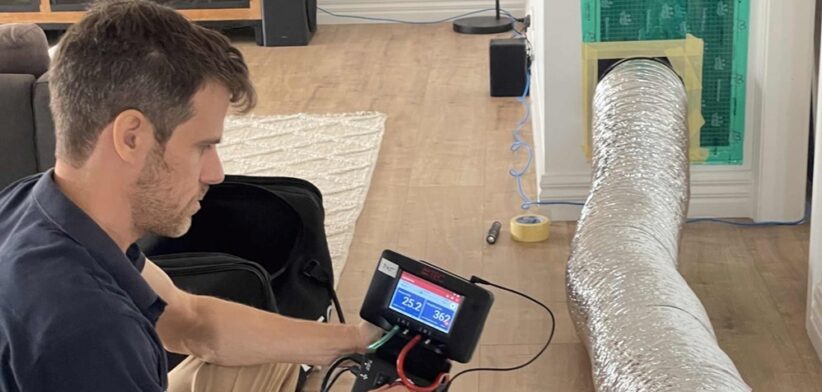Australian builders have tightened up their act over the past decade with homes now much more airtight, leading to reduced energy consumption and improved health for residents.
New research from CSIRO has found new Australian homes were up to 50 percent more airtight than those tested in 2015.
Senior Experimental Scientist Michael Ambrose said this benefited homeowners, as houses and apartments that met recommended air tightness levels were more comfortable, had lower energy bills and healthier indoor air quality.
Mr Ambrose said air tightness minimised unintended air movements within a building, prevented outdoor air from entering and indoor air from escaping.
“Poor air tightness can cause draughts, increasing energy bills by up to 20 percent. Conversely, homes that are too airtight without controlled ventilation can lead to condensation, mould and health issues for residents such as headaches and nausea from higher carbon dioxide and monoxide levels.”
Mr Ambrose said researchers tested more than 230 apartments and detached houses built in the last four years in Melbourne, Sydney, Canberra, Brisbane and Adelaide, with homes specially designed for air tightness excluded.
“While the research results were positive and compare well to standards in other countries like the UK, the study found room for improvement.”
Mr Ambrose said researchers used a blower door test to identify the leakage rate and determine where leakages occurred.
“Leakages were found in most new homes, mainly from bathroom fans, sliding doors and poor or missing door seals,” Mr Ambrose said.
“Some other homes, particularly apartments, were found to be extremely airtight, which can result in issues impacting building performance and resident health, if controlled ventilation is not included.”
He said the report outlined a range of recommendations for Australian building codes to address common air tightness issues, including:
- Establishing air tightness standards in the National Construction Code.
- Requiring controlled ventilation in new buildings, particularly apartments to reduce indoor pollutants and moisture.
- Making air barriers, such as building wraps mandatory in all new residences,
- Providing on-site training and educational resources to connect builders with cost-effective solutions that improve building performance.








